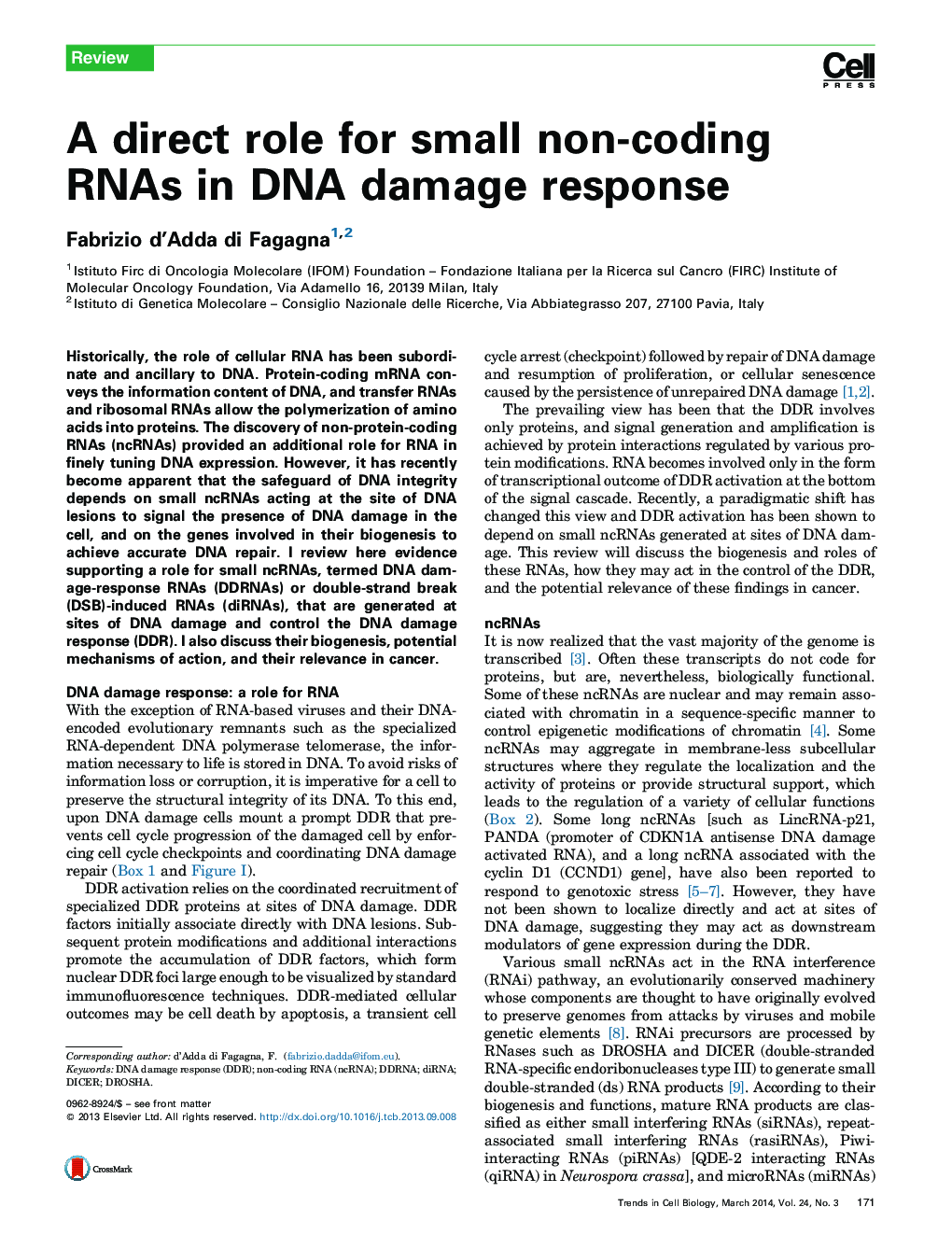| Article ID | Journal | Published Year | Pages | File Type |
|---|---|---|---|---|
| 2204428 | Trends in Cell Biology | 2014 | 8 Pages |
•DNA damage generation is associated with the generation of short non-coding RNAs.•These RNAs have the sequence of the damaged locus.•Their synthesis is conserved among mammals, plants, and Drosophila.•These RNAs are involved in DDR signaling and DNA repair.
Historically, the role of cellular RNA has been subordinate and ancillary to DNA. Protein-coding mRNA conveys the information content of DNA, and transfer RNAs and ribosomal RNAs allow the polymerization of amino acids into proteins. The discovery of non-protein-coding RNAs (ncRNAs) provided an additional role for RNA in finely tuning DNA expression. However, it has recently become apparent that the safeguard of DNA integrity depends on small ncRNAs acting at the site of DNA lesions to signal the presence of DNA damage in the cell, and on the genes involved in their biogenesis to achieve accurate DNA repair. I review here evidence supporting a role for small ncRNAs, termed DNA damage-response RNAs (DDRNAs) or double-strand break (DSB)-induced RNAs (diRNAs), that are generated at sites of DNA damage and control the DNA damage response (DDR). I also discuss their biogenesis, potential mechanisms of action, and their relevance in cancer.
